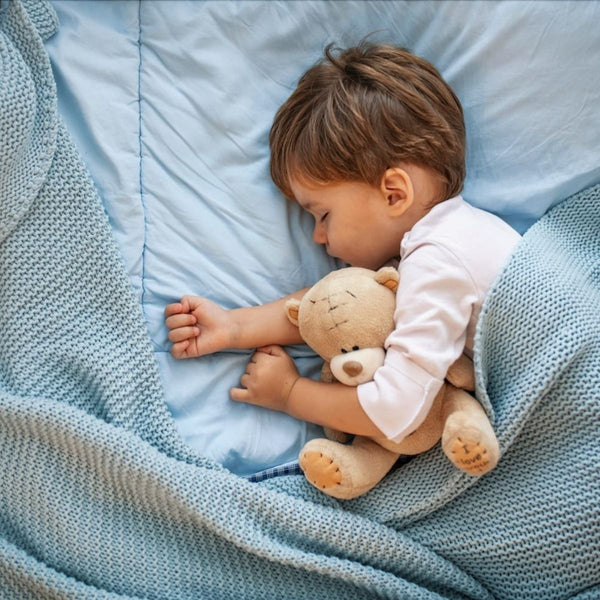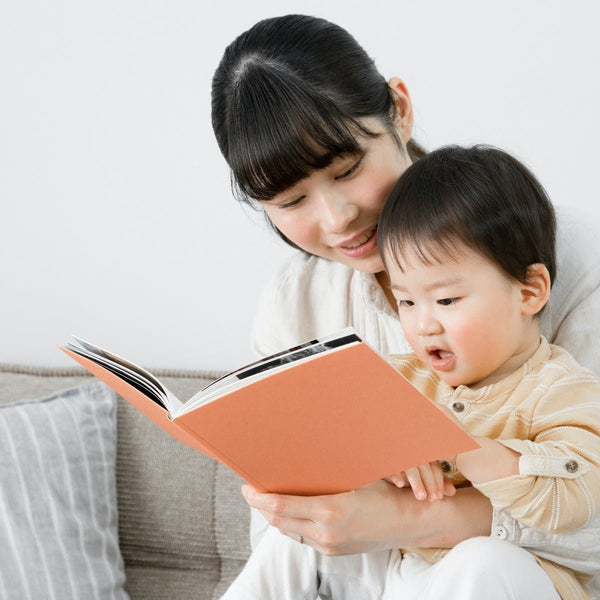What’s the Best Way to Help Develop Your Baby’s Senses?

It takes a whole village to raise a child. It’s a bit similar to helping babies develop their senses. As a parent, what you need is a combination of efforts and different approaches if you want to accomplish that goal.
For instance, every interaction with the babies is actually an opportunity to further their development. Even as simple as looking and smiling at the newborns is an opportunity to engage and help develop their senses.
When should you start stimulating your baby’s senses?
Even while they’re inside the womb, babies are actually getting continuous stimulus from their mothers. Every time you talk, your baby is listening to your voice. Your lovely newborn might even already know the tastes of the foods you eat during your pregnancy.
The sensory development continues when the baby enters to the world. It’s a time for celebration but there’s still much work to be done. You have to ensure that your baby always feels safe.
Transition from the womb into the world will be much safer and easier for the baby if the mother’s always nearby. That’s because the baby already recognises the mum’s smell and voice. Whenever you’re nearby and talking, your baby encounters familiar stimulus. It’s also an opportunity to engage the baby’s auditory and olfactory senses.
Another important thing besides sensory development
Aside from helping babies develop their senses, there is a more important thing parents pay special attention to. It’s forming a strong emotional bond with their babies.
Mums will automatically form a loving and emotional bond with their newborns. It’s what nature intended. Your body will produce high levels of oxytocin (also known as the love hormone). This even gets higher when you regularly interact with your baby.
That’s why it’s important to chat and play with your baby as many times as you can. This will strengthen the bond between you. You will also achieve a better wellbeing if you regularly do this. Babies will also feel the security and support they need to help them transition during their rapid growth and development.
The critical periods in baby’s sensory development
When it comes to developing the baby’s visual sense, the mere presence of the parents greatly helps. The first few months of the babies are critical in their visual development. Their vision is actually blurry for those first few months. That’s why many parents pay special attention during that crucial period.
It starts from when the baby’s still inside the womb. It continues for the first few months (up to a year) which require active involvement from parents. The key here is interaction and for parents to understand their role on the baby’s sensory development.
What’s the role of parents?
Aside from making the baby feel safe, the parents are also there to aid with the overall physical, mental and emotional development of the newborn. After all, the parents are the ones who are mostly involved in interacting with the baby (especially if you devote all your time in taking care of your newborn).
It’s a huge role for parents (and it’s a lot of work). The good thing is, you don’t have to be deliberate in every interaction you make with your baby.
As mentioned earlier, each interaction is an opportunity. Even ordinary simple activities such as feeding and changing of diapers can help in developing the baby’s sense of sight, smell, hearing, taste and touch.
For example, feeding the baby and roughly describing the taste helps in the baby’s recognition of taste. Also, whenever you change the diapers, it’s an opportunity to talk to your newborn. You can describe what you’re doing as you do each step. You can also tell something about how you prepare the food. As long as it’s a regular interaction, it’s a clear step towards furthering the baby’s development.
Even if you can’t come up with a specific activity, normal everyday interactions are sure to help newborns develop their senses. Our ancestors didn’t have special tools, gadgets and techniques for this. They just relied on constant interaction with their newborns.
However, if you want your baby to have a boost in sensory development, there are specific approaches and activities to accomplish that. Let’s explore those approaches on the next section.
Which activities help babies boost their development?
The key here is rich interaction. Babies should be constantly interacting with the environment and other people. After all, it’s about developing their sensory abilities. A rich and interactive environment will help anyone hone their senses.
Sight. The babies’ eyesight is actually blurry from birth up to 5 months old. However, they can still recognise faces and facial expressions. They can also watch some movements. That’s why making eye contact with your baby is useful. In addition, you can let your baby’s eyes follow an object’s movement forward and backward (and also from left to right). Watch how your newborn’s eyes move and follow the object.
Hearing. Babies (and even adults) best learn by imitating. Babies can only imitate something they’ve encountered before. They can only spout words and sounds they originally hear from parents and other people. That’s why it’s recommended to constantly talk with your baby. You also have to respond to your baby’s reactions (e.g. smile, laugh). This is the way you validate your baby’s facial expressions and sounds.
Touch. Notice there are times when your baby is eager to reach out to something. Babies want to feel the object they see. They also want to know the texture and know if it’s real. Let your baby do that by putting objects nearby. You can also put the object a bit out of reach. Watch your newborn son or daughter stretch, roll and crawl to reach it. Aside from the development of sense of touch, this also helps your baby understand cause and effect.
Other activities for sensory stimulation and development
Aside from the activities mentioned above, there are other specific things you can do to boost your baby’s sensory development. Here are some:
Let your baby lie on a playmat. Babies should be given enough time to explore the things and surroundings themselves. Newborns are naturally inquisitive and curious. They can’t ask questions yet. What they can do for now is play and touch the things around them without your help. Just make sure that you’re still nearby (supervision) and that your baby is safe.
Make bathtime an opportunity for your baby to learn about the interaction between water and objects. This is a great chance for babies to learn about flowing, sinking and floating. It’s also where babies can reinforce their learning about cause and effect. What happens when you agitate the water? What happens if you try to immerse an object? In addition, this is also where the babies can learn more about the concept of hot and cold (sense of touch development).
Let your baby shake and stack the toys. For both babies and adults, the most effective way to learn is by doing it (not just watching the activity). This is especially important for babies when they’re just starting to make sense of the world. With your close supervision, allow your baby to experiment with the toys. Your baby might shake and stack those toys (or even throw them away). This is one of the babies’ ways of trying to make sense of the objects and their surroundings.
Should you do this all day?
It’s a lot of work (daily interaction and paying attention to your baby’s needs) and time-consuming. You are most likely to be deprived of sleep especially during the first year.
Keep in mind though, that your baby also needs a break (not just you). When your baby already had enough entertainment and stimulation, you can put away the toys or slow down when you’re talking. You can also make a soft hum sound to put your baby to sleep.
You can also tell if the baby’s getting bored or exhausted. Babies might be rubbing their eyes or they might just be closing them more often. It’s a clear sign that they want to rest or sleep. They might even look away if they’re feeling overwhelmed or bored.
If it’s your first baby, it might be initially hard to recognise those clues. But after a while, you’ll get used to it. You’ll know the meaning of your baby’s small actions. If your newborn shows signs of boredom or tiredness, you’ll also know it’s your time to rest.
When do you know it’s playtime?
Your baby’s first playmate is you. Babies need constant attention. When they’re ready for playtime, it could be unpredictable and in the most inconvenient of times. However, you need to take advantage of those playtimes so your baby will be regularly stimulated. You’ll know if your baby’s ready by looking for the following signs:
- Your baby is making constant eye contact
- Movement of arms and legs
- Trying to reach out to something
- Making sounds and noises
These things might happen often throughout the day. That’s especially the case when your baby’s feel rested or well-fed. Also, the signs might be a different you might not understand them right away. No worries because you still have a lot of time to bond with your baby.
During playtime, you might just need to act normal. You can talk about your day or share some of the fun stories you had in the past. Tell your story in a happy tone because this is when your baby’s the most engaged and responsive (in contrast to sad tone). You can then continue on with this until you feel that your baby’s tired or bored already.
One way to further baby’s development
As discussed earlier, interaction is the key to baby’s sensory development. It was also mentioned above that optimum development requires a combination of approaches.
There’s no substitute for the care of a hands-on parent. However, combining other approaches (such as play) will help optimise the baby’s progress.
One way to accomplish that is by letting your newborn use a BabyGame Laymat. It’s recommended for babies 0-12 months.
This safe laymat provides stimulation to the baby’s sense of sight, touch and hearing. It’s possible because of the laymat’s:
- Safe and unbreakable baby friendly mirror that attracts visual attention
- Soft musical accessories that when squeezed can stimulate the baby’s hearing and touch
- Support cushion which helps babies feel comfortable when lying on their tummies. Babies can then play in that position
There are other ways and approaches to help babies achieve optimum sensory development. Often, the best approach is a combination of different methods and efforts (especially from you the caring mothers and father). The most important thing is to regularly interact with your baby while taking advantage of play and other approaches.







